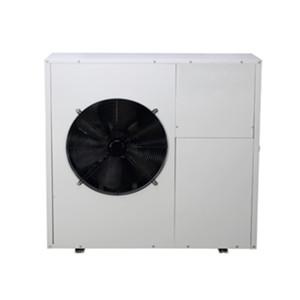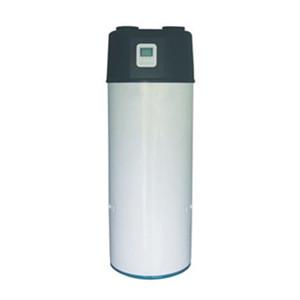Problems with Heat Pumps
Before contacting your local HVAC technician for a service call, read through the following information about common heat pump issues and do some legwork. You might save a little money!
Diagnose and troubleshoot basic heat pump problems
Your heat pump operates just like a central air conditioner, with the added benefit of providing heat to your home during the winter months. Some common issues covered in this heat pump troubleshooting guide include:
1. Blowing cold air in heating mode
2. Heat pump continues to operate in mild weather
3. The outdoor unit is blocked
4. The outdoor unit is frozen
5. The fan on the indoor air handler does not start.
Blowing cold air in heating mode
If your heat pump system is blowing cold or room temperature air when the thermostat is set to heating mode, there are some common situations you can fix without even looking at the heat pump itself.
Check the Thermostat - Double-check that the system has not been accidentally set to cool. Also check your fan control settings. If you like to run the fan continuously for air circulation and filtration, you may experience room temperature or cold air because the system is not actively heating. Resetting the system to heating mode and setting the fans to automatic mode should resolve these issues.
If checking your thermostat doesn't solve the problem and your system still isn't heating and cooling properly, you'll need to start inspecting your indoor and outdoor units more closely, as discussed below.

Heat pump continues to operate in mild weather
Since your heat pump relies on heat energy from the outside air, it's completely normal for the unit to keep running in extreme temperatures as the unit tries to extract enough heat for your home. However, if the outside temperatures are moderate and the unit is still struggling or constantly running, some heat pump troubleshooting is required.
1. Check the thermostat
– Start by checking the thermostat settings. Is the heat pump set to air conditioning mode? If so, changing the heat settings should fix the problem.
2. System adjustment
– If it’s not the thermostat setting, your heat pump may need adjusting. Regular maintenance of your heat pump by a professional, qualified HVAC technician can provide greater operating efficiency and more reliable comfort. One service commonly provided during routine maintenance is cleaning of outdoor coils. If your coils are very dirty, your system may not be able to keep up with your heating needs.
3. Clean/replace air filter
- Another service your HVAC technician may perform is to inspect the air filter located in or near the indoor air handling unit. A dirty or clogged air filter will cause your system to run longer and be less efficient. They should be cleaned or replaced. You can also easily do this yourself. For more information on the benefits of routine system maintenance, check out our heat pump service page.
4. More serious problems
- However, if it's slightly cold outside and the unit has been recently serviced and continues to run, you may be experiencing deeper issues such as:
* Freezing coil
*Faulty reversing valve
* Low refrigerant charge
* Compressor problem
For each of these situations, it's usually best to contact a professional for diagnosis and heat pump repair.
When to call an expert
If you've taken the necessary steps to check your thermostat settings and make sure your air filter is clean, but you're still facing problems with your heat pump, it might be time to seek help from a local expert.
Heat pump reversing valve noise
If you notice a slight hissing sound coming from your heat pump reversing valve, there's no need to worry. This sound is usually normal and indicates the valve is operating properly. The reversing valve is responsible for changing the direction of refrigerant flow, allowing your heat pump to switch between heating and cooling modes. However, if you start hearing excessive or persistent noises from your reversing valve, it may be something you need to pay attention to. In this case, it is recommended to contact your local carrier expert as this may indicate an underlying issue that requires attention and repair.
1. The outdoor unit is blocked
Your heat pump system requires unrestricted airflow through your outdoor coil to work efficiently. If your system isn't heating efficiently or running consistently, check the outdoor unit to see if it's clogged with excess debris, such as leaves or snow. If the device is clogged or obstructed in any way, clear the source of the clog and resume monitoring the internal temperature. If you're still having problems and you've followed the rest of the troubleshooting tips, it's time to contact a professional. Remember, it's better to fix a smaller problem now than to wait for a bigger problem and a bigger bill later.
2. The outdoor unit freezes
Another possible problem is ice on the outdoor unit. Frost on outdoor coils is normal during the winter, but ice build-up can indicate a problem. Ice on the coil blocks airflow and greatly reduces its effectiveness. Coils freezing during the summer months are also suspicious. No matter the season, frozen coils can be the source of heat pump problems and can occur for a variety of reasons.
1). Low refrigerant charge
– If your system is low on refrigerant, it won’t be able to generate enough heat to melt winter ice. In the summer, this could be the reason your indoor coils are freezing, and in either case, the heat pump has to work extra hard to keep you comfortable. Testing and charging the system is the job of a qualified HVAC technician.
2). Water on the outdoor unit
-- During the winter, water from melting snow or ice can leak onto the coils and freeze. Your system has a defrost mode, but it may not be adequate for severe freezing conditions. To fix this problem, find the source of the water, such as a leaky gutter, and repair the leak. Never try to chip the ice off the coil. If the unit does not defrost with the defrost function, call your local Carrier dealer.
3). The fan motor is defective
- In an outdoor unit, a fan draws air through a coil, assisting in the heat transfer process that is essential for heating and cooling a home. A defective fan motor means little or no airflow, which can cause the coils to freeze. This is another job for professionals.
4). Defrost timer failure
--The defrost mode on the heat pump is designed to activate at scheduled intervals to prevent the outdoor unit from freezing. If the timer malfunctions, your outdoor unit may not defrost as needed and freeze. Diagnosis and remediation are best handled by a certified HVAC technician.
The fan on the furnace or air handler is not starting
If your outdoor unit is running but you don't feel any air coming from the register, your indoor air handler may not be turning on. Heat Pump Troubleshooting Common issues that can cause your indoor unit to not start include looking for:
1. Circuit breaker tripped
– Use separate circuit breakers for your indoor and outdoor equipment. If your indoor air handler won't turn on, check your home's electrical panel for a tripped circuit breaker. Please follow standard safety precautions when resetting the circuit breaker. If it continues to trip, contact a professional.
2. Poor wiring connection
– Air handler failure may be caused by burnt or disconnected wires. Please contact your local Carrier dealer for diagnosis and repair.
3. Blower motor burned out
- If your blower motor is burned out, contact a trusted local HVAC technician to thoroughly inspect your system, determine the cause of the burned motor, and estimate repair and replacement costs.
As you can see, heat pump problems are not always related to the outdoor unit.
When to Call an Expert for Heat Pump Troubleshooting
While there are many simple remedies to solve heat pump problems, many problems are best diagnosed and resolved by a qualified HVAC professional. The sooner the problem is resolved, the sooner you and your family can enjoy comfort and get back to your daily routine.
Keep following us
Leomon is a professional heat pump manufacturer. We'll be posting some free tips for using your heat pump. Please continue to follow us to make better use of your heat pump.





